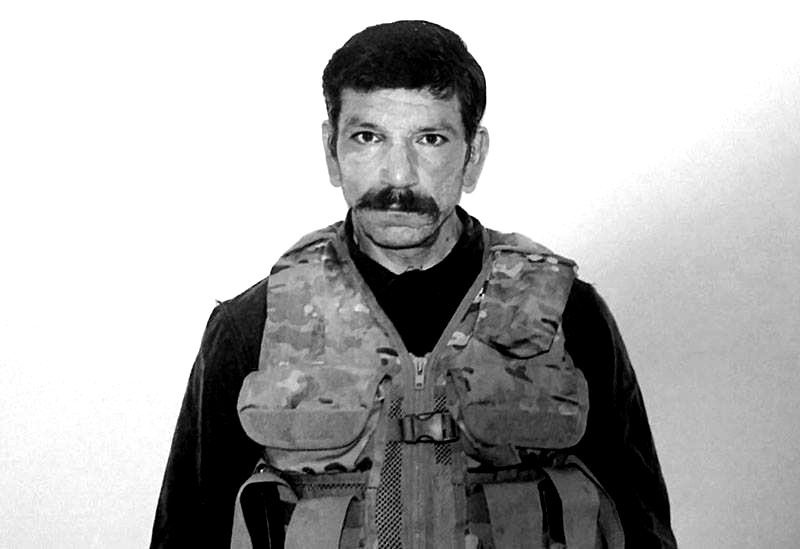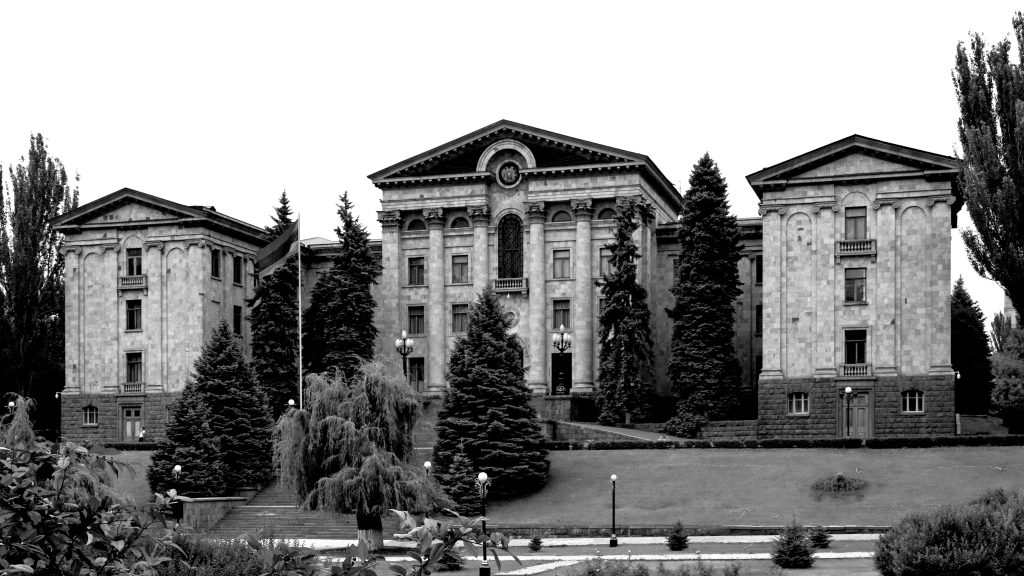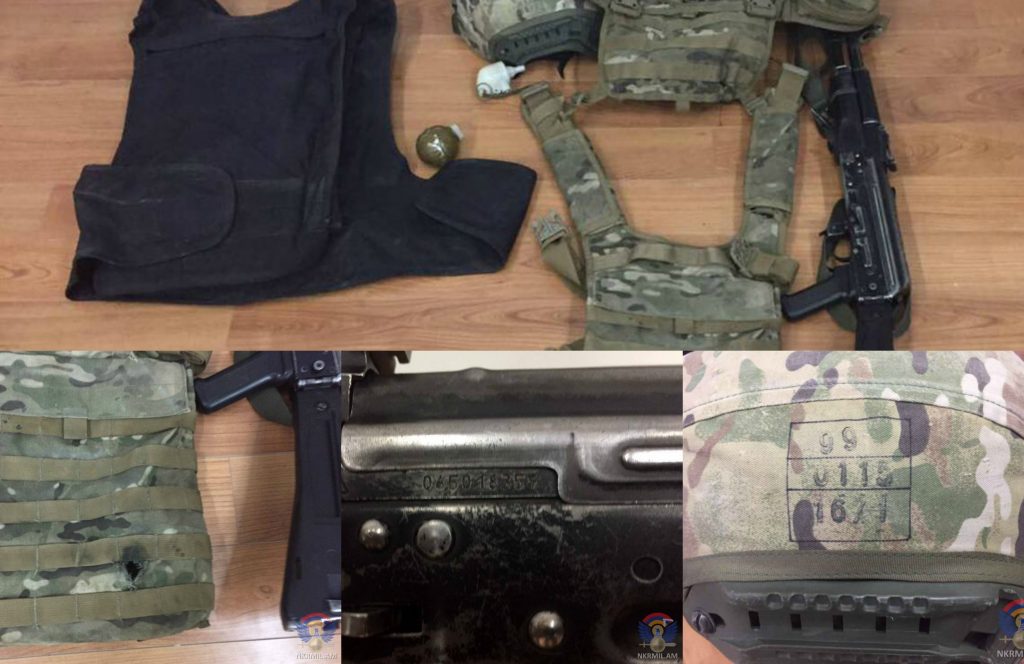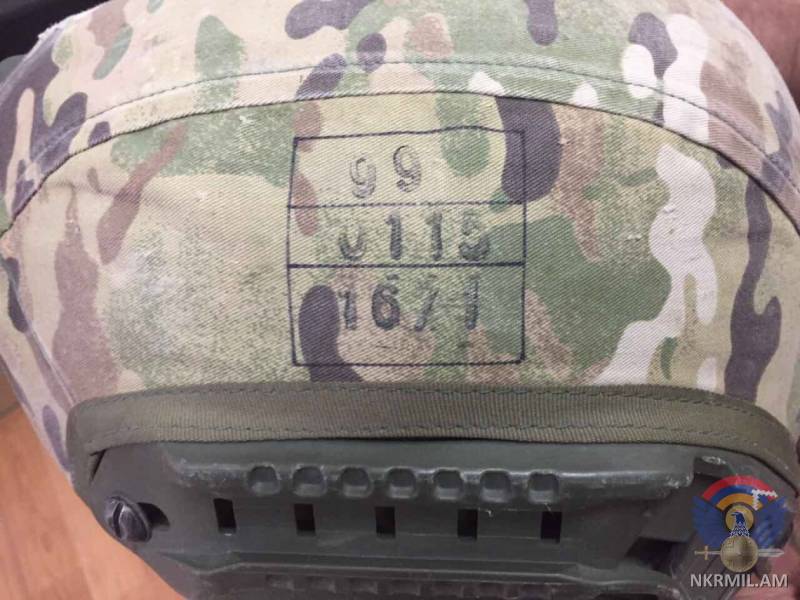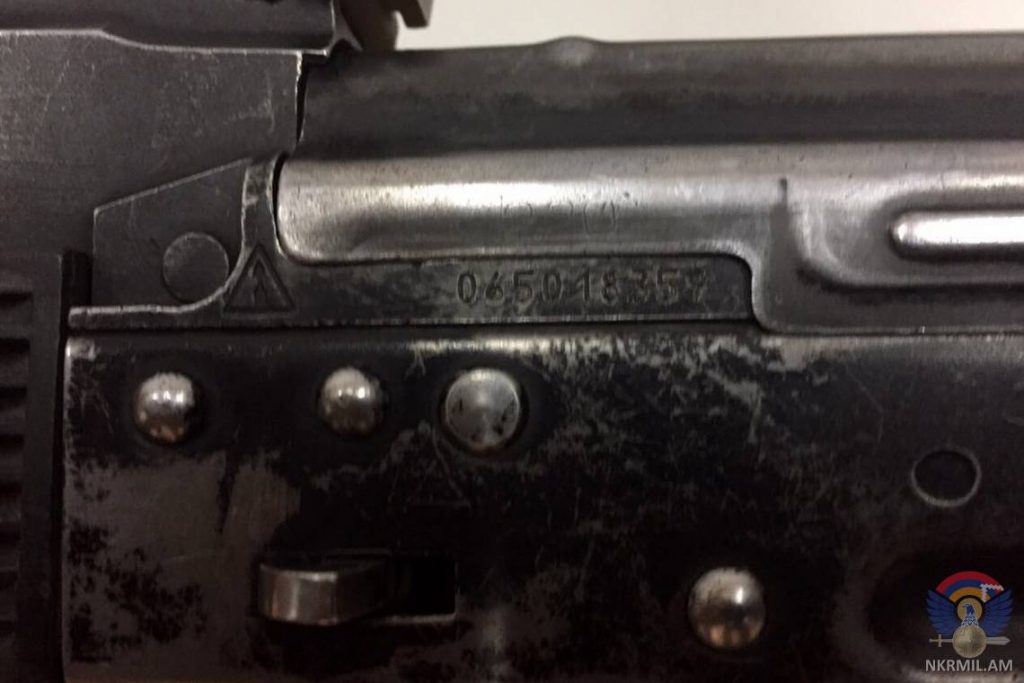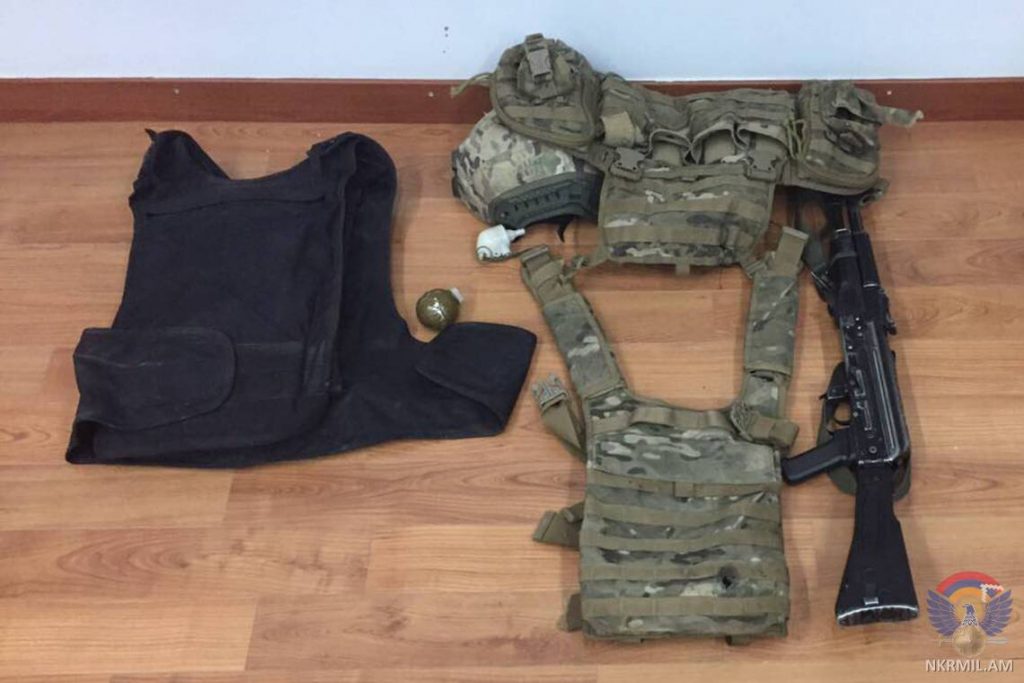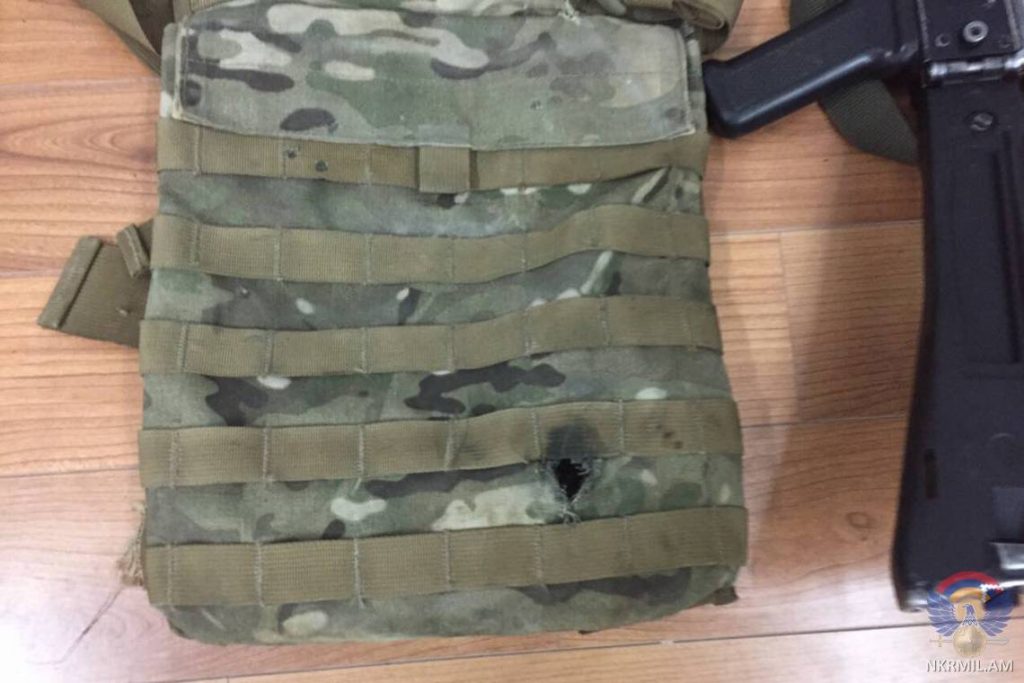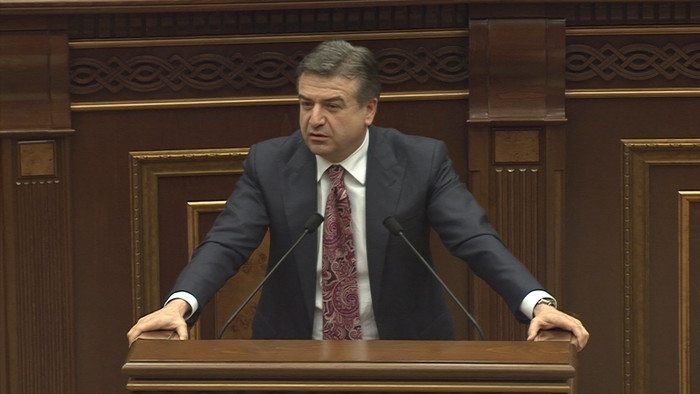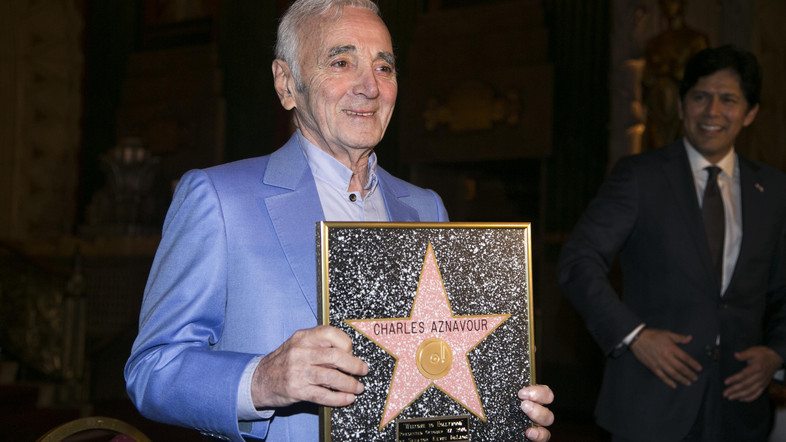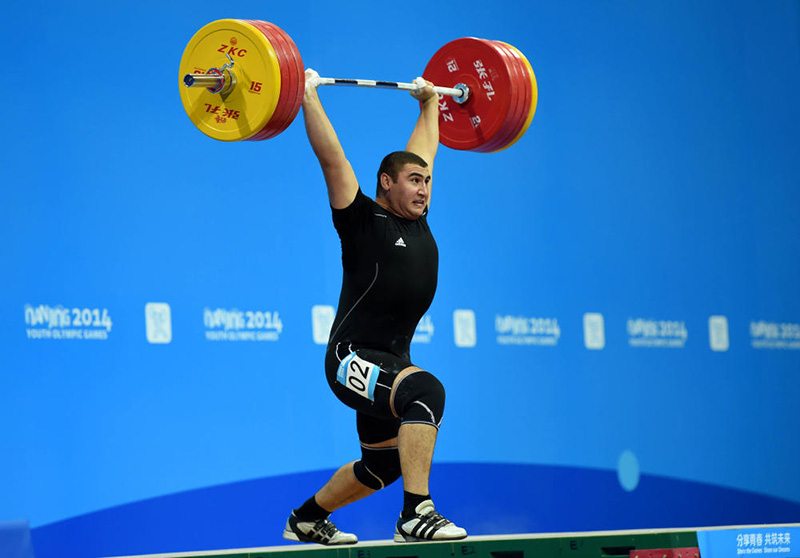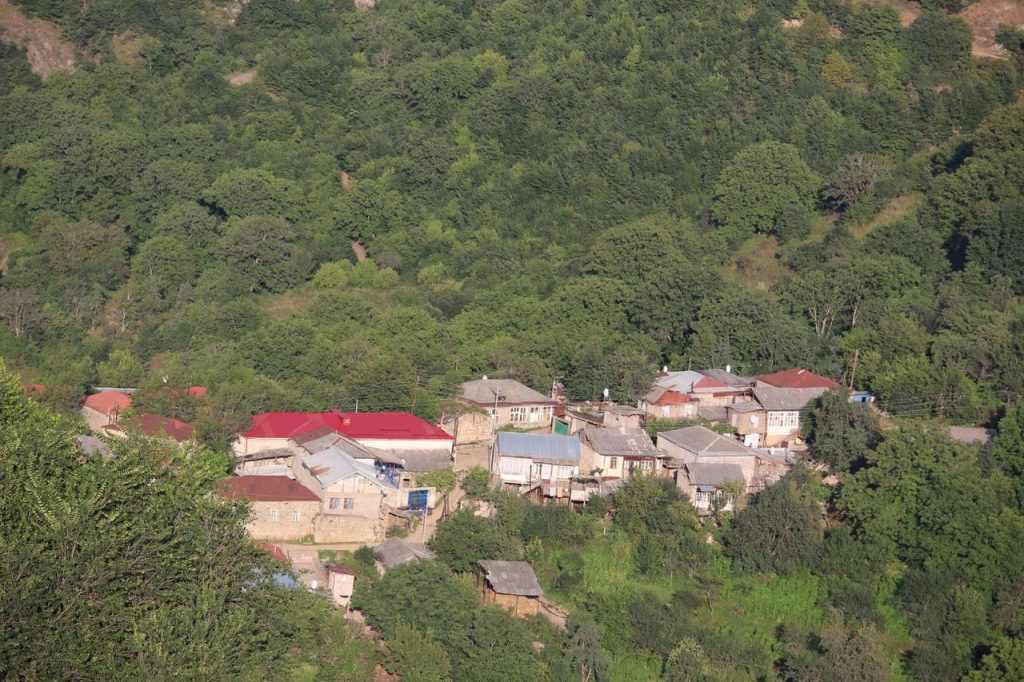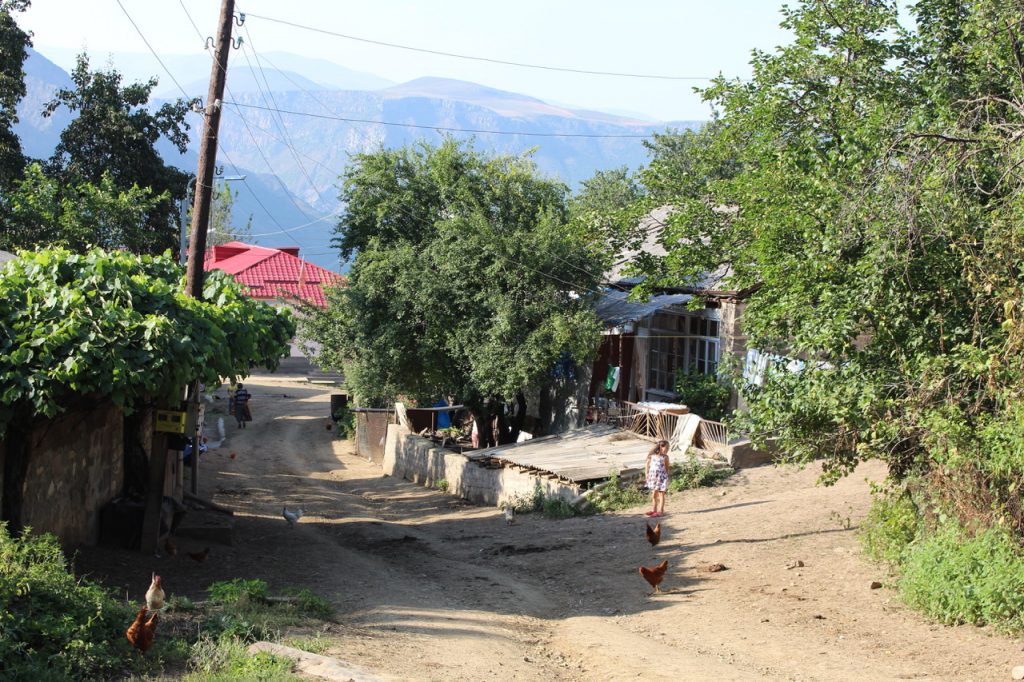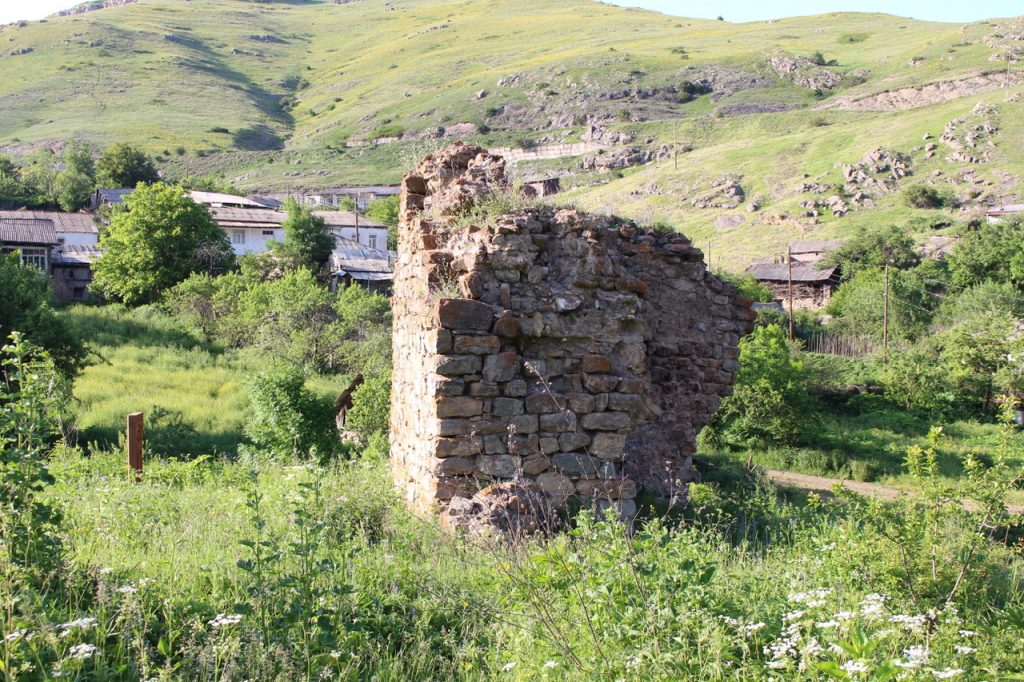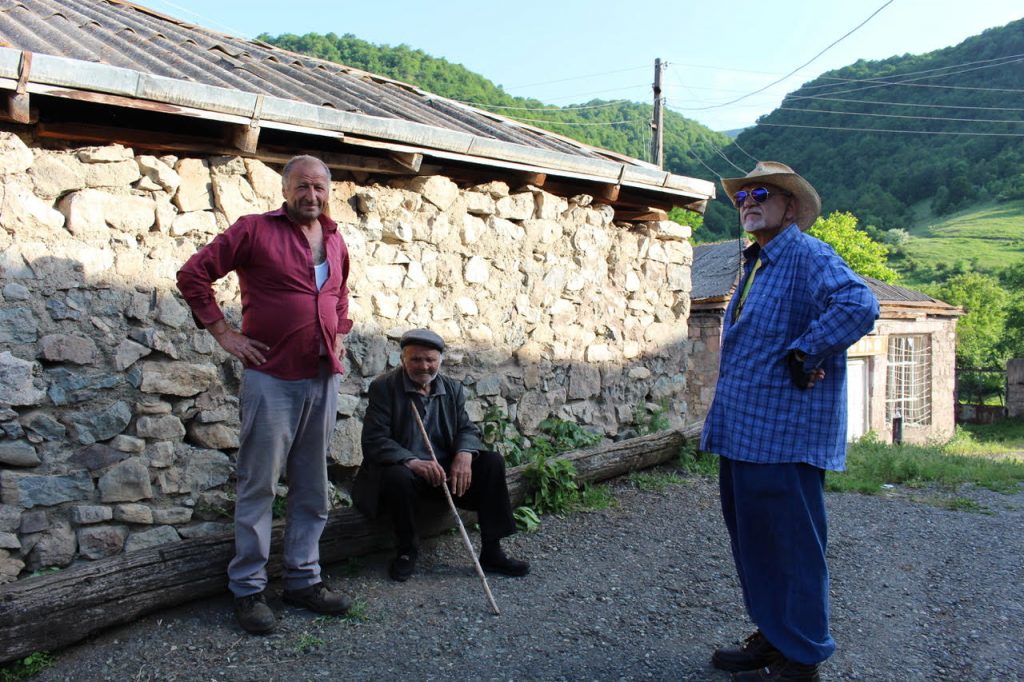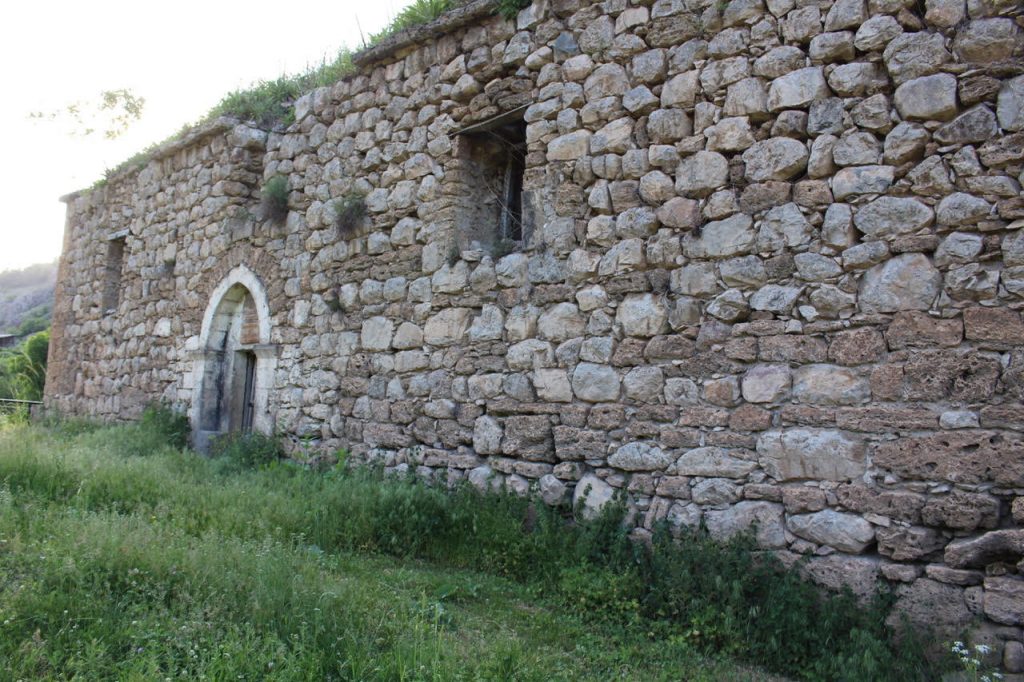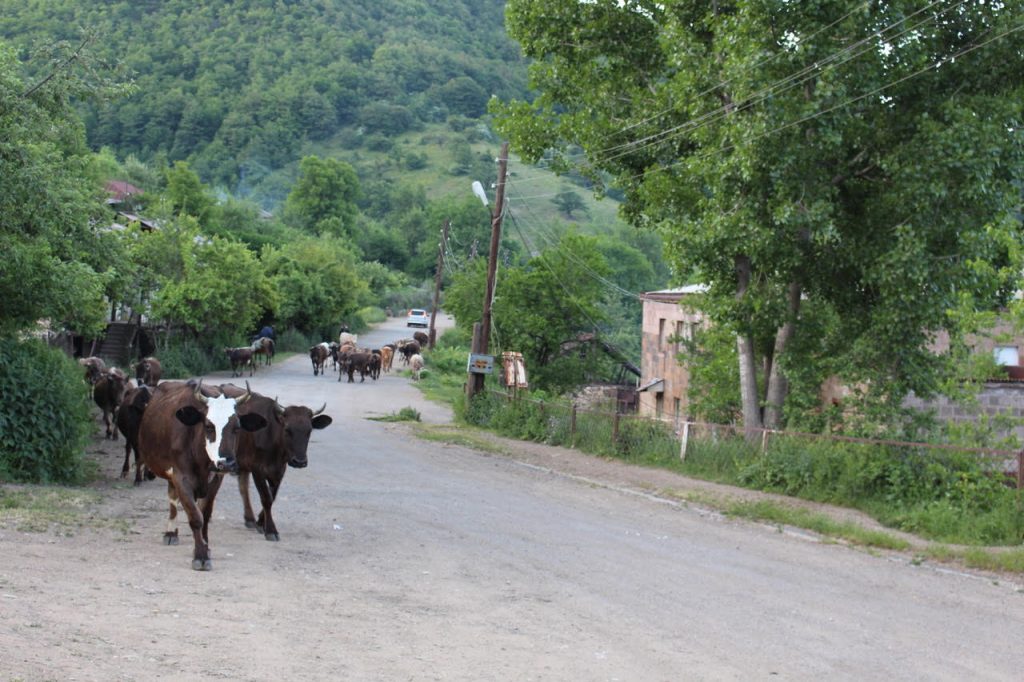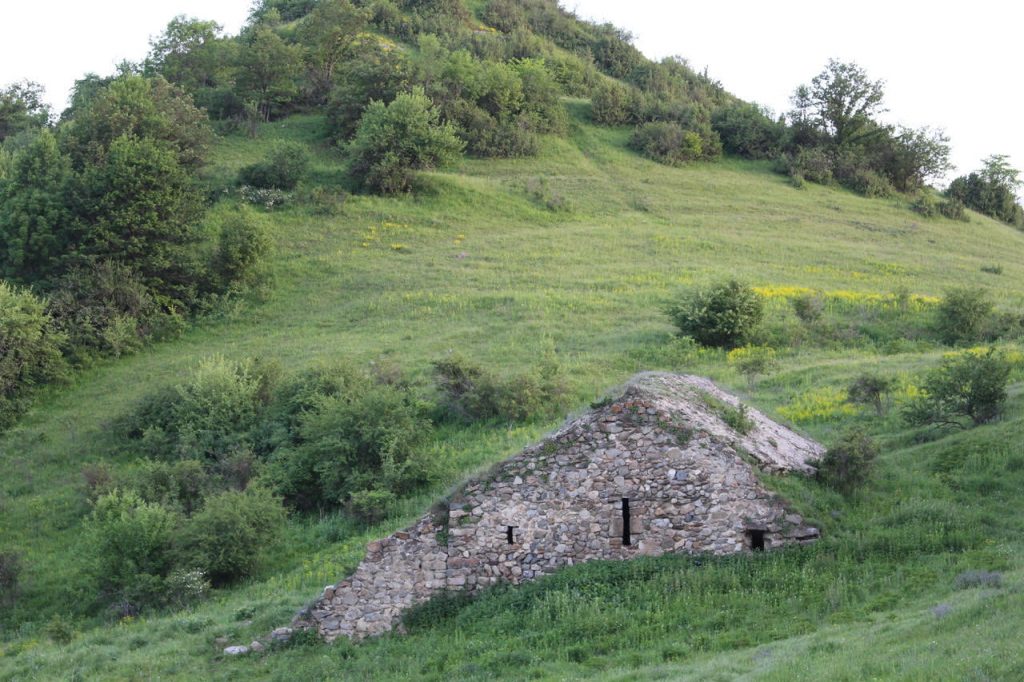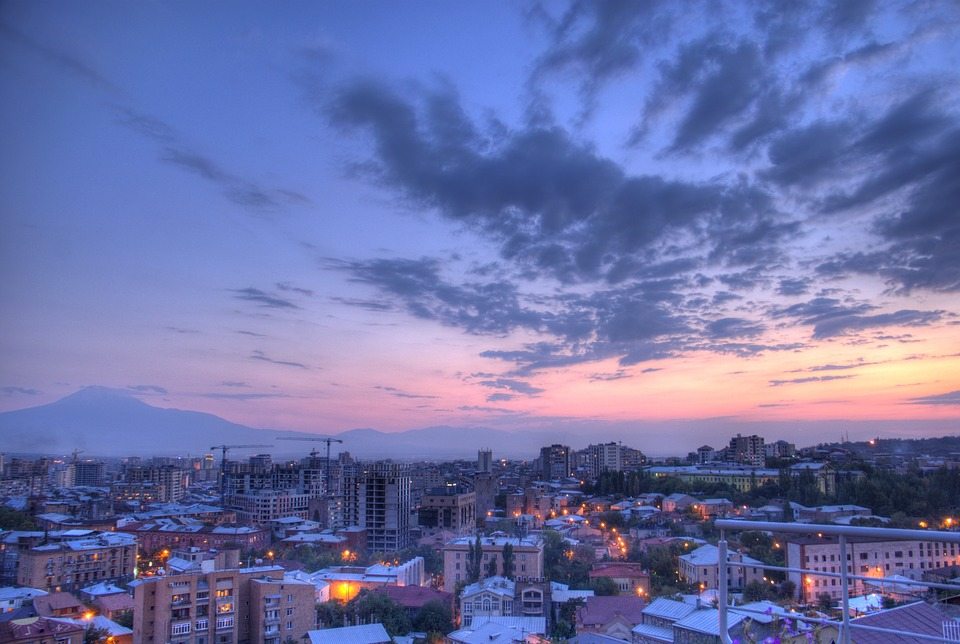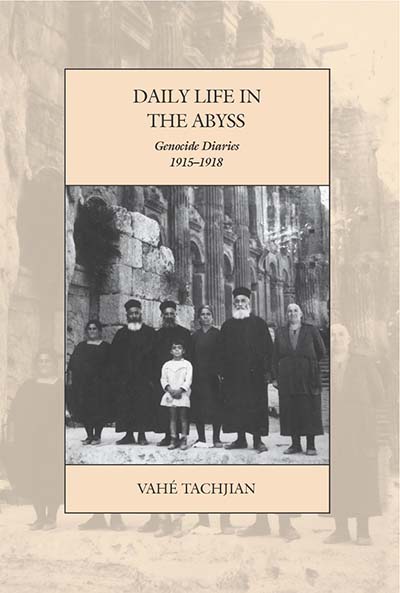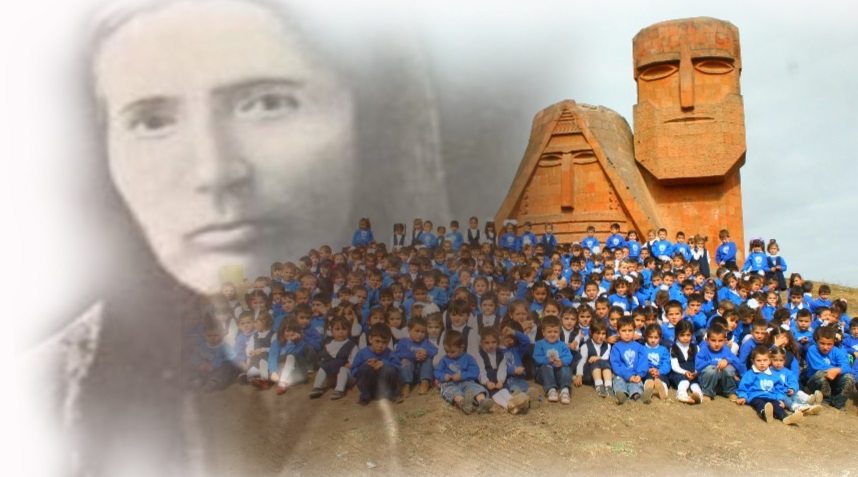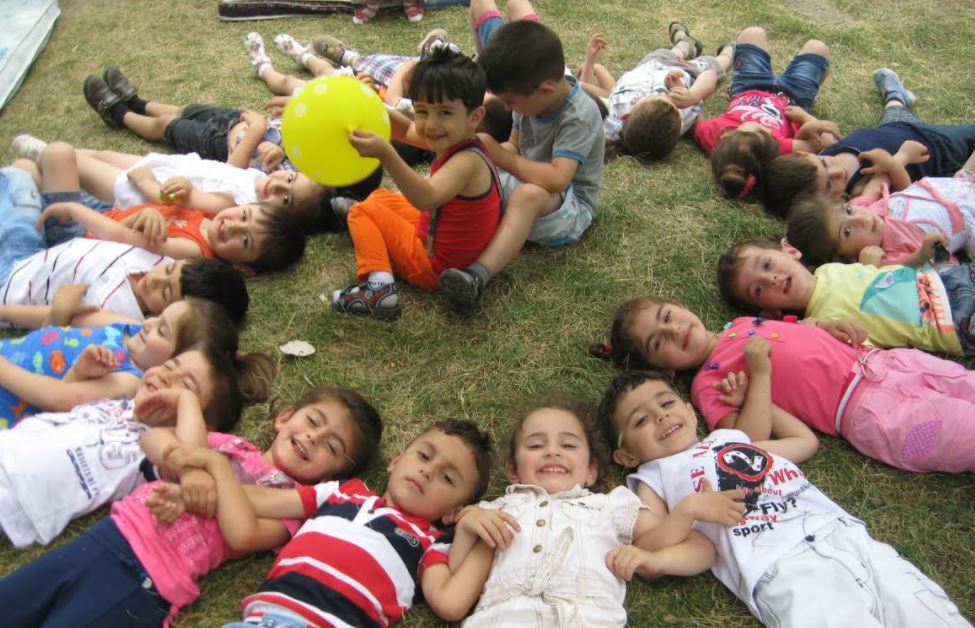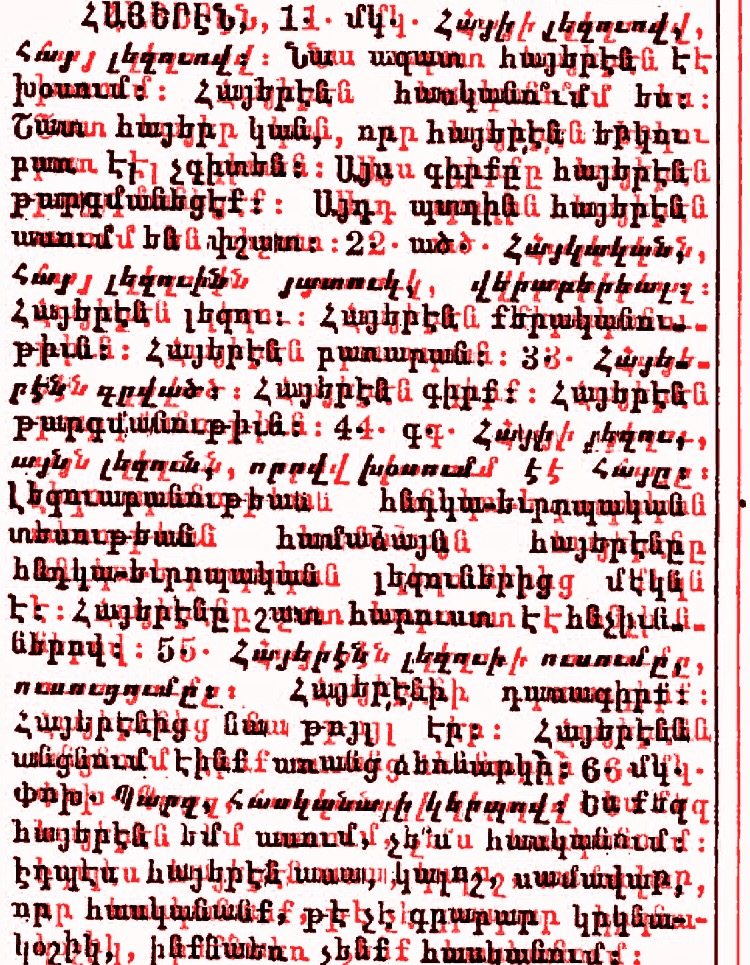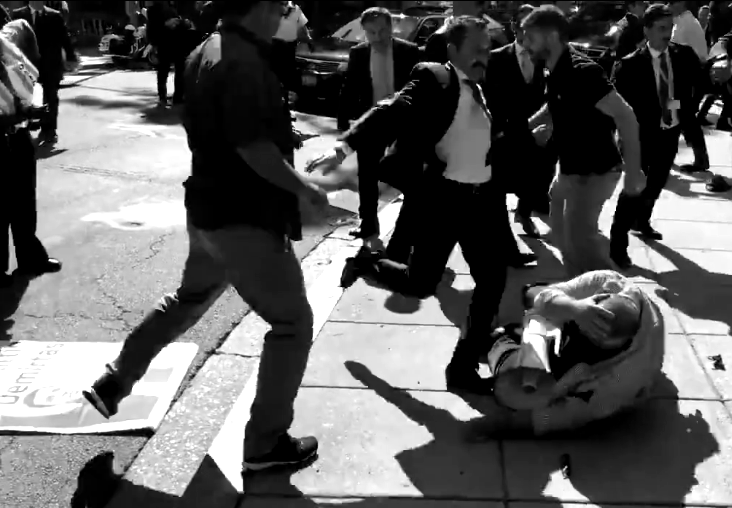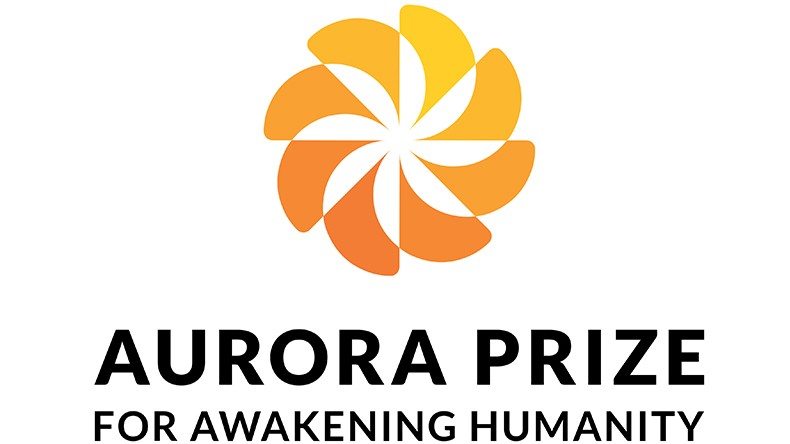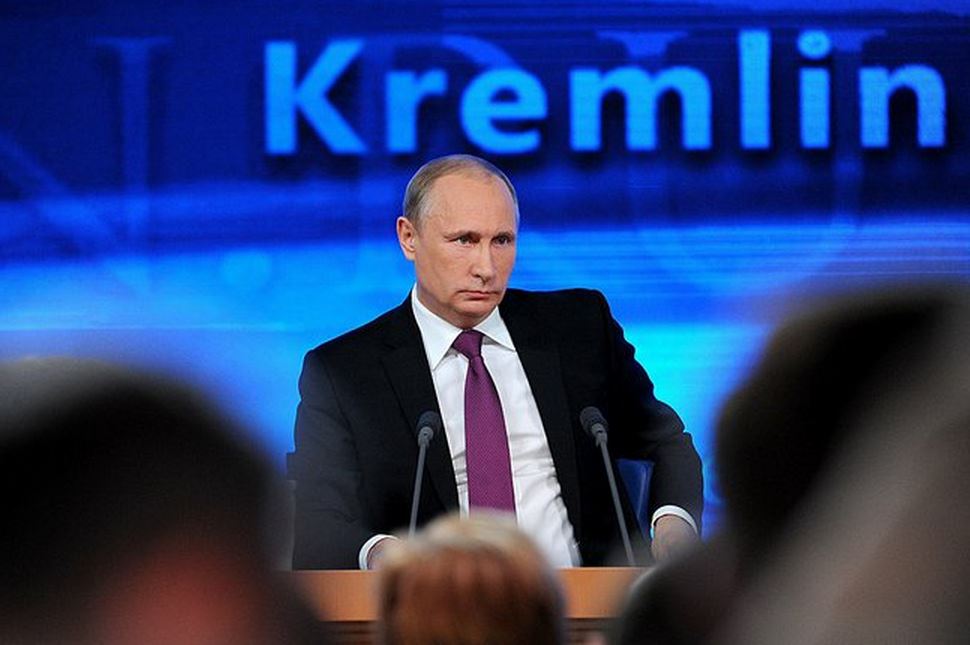Special for the Armenian Weekly
Yannis Vasilis Yaylalı, an ethnic Greek peace activist born in Samsun, was recently arrested by Turkish police in the Kurdish city of Şırnak, where he had been living since 2012.
![]()
Yannis Vasilis Yaylalı
Meral Geylani, his partner and fellow activist, told the Armenian Weekly that four lawsuits have been filed against Yaylalı. Three of them are for “discouraging the public from military service” and one is for “publicly disrespecting Mustafa Kemal Ataturk” through his articles and social media posts about the 1914-1923 massacre of Pontian (Pontic) Greeks by Turkey.
“On April 22, the day he posted his article about the commemoration of the Pontian Greek Genocide, he was arrested by police. He was first jailed in Şırnak and then was placed in a prison in the city of Elazığ. His first trial will be held on July 18,” Geylani said.
Yannis, who was born Ibrahim Yaylalı, is a former Turkish nationalist who was proud of his enmity to Kurds, not to mention to other indigenous peoples of Asia Minor.
In 1994, he voluntarily joined the Turkish military as a commando to fight against the Kurdistan Workers’ Party (PKK) in Şırnak and fell captive to the PKK during a clash. If he had died, he would have been declared a “martyr” by the Turkish government. But after he was injured and taken a captive by the PKK, his family sought help from Turkish authorities. Instead, they were told that they were Greek and were threatened. His whole life changed with this new discovery.
In a 2016 interview with the news website Siyasi Haber last year, Yannis introduced himself as follows: “I am Yannis Vasilis. Of course, I have not always been Yannis Vasilis Yaylalı. I was İbrahim Yaylalı before enrolling in the Turkish military. I did not know anything about my Greek [heritage] back then and I engaged in Turkish racism. But of course, this stemmed from where I lived and the education I had received.”
Yannis then learned that his great-grandfather was murdered during the Pontian Greek Genocide and that Yannis’s grandfather was given to a Turkish family and raised as a Muslim Turk. In a 2014 interview with the news website Demokrat Haber, he said, “If they had told me 30 years ago that I was a Greek, I would have sworn at them. In the Bafra town of Samsun where I am from, Kurds are made to do the heaviest and the worst work and there is so much racism in us. We beat up Kurdish youths many times.”
Military Service and Captivity Under the PKK
But his political transformation began during his military service in 1994 when he witnessed how Turkish soldiers persecuted Kurdish villagers in Şırnak. “When we went there, the villages had already been forcibly emptied by the Turkish military. It was the period that the Kurdish villages were raided and burned down by Turkish soldiers the most. The state was applying pressure on the villages to make them accept its power. We saw these things when we went there,” he explained.
He also witnessed outright barbarism of the Turkish soldiers. “I saw them [Turkish soldiers] destroying a dead guerrilla to pieces. When I saw that, I vomited. Then the specialist sergeant said to me: ‘Are you a man? Are you Turkish? Why did you throw up?’ Guerrillas would never end up alive unless they confessed,” he said.
Yannis also described an incident of village burning in the mountain of Gabar, which he saw firsthand. “First military teams raided homes and started beating up people and destroying their properties. Then they set homes ablaze.”
In September 1994, during a clash with the PKK, he was injured and passed out due to heavy bleeding. A group of PKK members then found him and took him to their camp in Iraqi Kurdistan. “They told me I was a prisoner of war and they would treat me in accordance with international agreements. They dressed my wound and gave me an injection. I was expecting them to torture me to get information from me. I was not expecting anything good from them. Because we had not obeyed any law when we dealt with them so I expected them to do the same. I thought they would cut me into pieces,” he explained in the 2016 interview.
Yannis said that his experience as a commando for two-and-a-half months in the Turkish military and as a prisoner of war at the hands of the PKK for two years and three months completely transformed him and his worldview. “I thought about our mistreating people in a way that constituted a war crime and the burning down of villages. Then I became a captive of the guerillas… You say you are good but you burn down villages, torture them and destroy their dead. You call them bad but they take you and treat you well.”
‘We Know You—You Are Greek’
On the third month of his captivity, he contacted his father and asked him to request information from authorities about his situation.
“My father went to Ankara to talk with a military officer who my uncle knew. But instead, another man turned up and told my father: ‘We know you. You are Greek, after all. We can call you ‘Greek members of the PKK’ and if we say that, you will be in a bad situation. So, don’t tamper with this too much.’ My father could not say anything. They [my family members] know they are converts [to Islam] but they feel Turkish. As they see themselves as Turkish, they think the state also sees them as such but the state does not forget,” Yannis explained.
In the eighth or ninth month of his captivity, he received word that his family was told they were Greek. “The journalists learned it while conducting interviews with my family. My mind then changed completely. Whatever the [Turkish] military said turned out to be a lie. Whatever the other side said, life confirmed it true.”
Upon his return to Turkey, he was brought to court and arrested. And when he was jailed, the torture began. “The moment I was put in prison, they jumped on me and started beating me. Because I was beaten up in prison for three-and-a-half months, my chest cage was injured. And they accused me of being a member of a terror organization. Then I was released pending trial. The trial lasted until 2013 and I was acquitted. In the meanwhile, my worldview became even clearer. I learned how the [political] system was enforced through attacks of the state,” he explained.
In 2012, he settled in the Kurdish village of Roboski in Şırnak with his partner Geylani to show solidarity as peace activists with the victims of the massacre that took place on Dec. 28, 2011.
How Konstantin’s Son Became ‘Mehmet’
In late 2013, Ibrahim went to court to change his Turkish name and became Yannis Vasilis Yaylalı. He told Siyasi Haber that changing his name is about “regaining his right and his identity.”
I went to court to change my name. And this is done with money. In countries such as ours, they create special difficulties for you when you want to embrace a non-Turkish name. They want two witnesses. My friends who know I am Greek became my witnesses. But when you want to investigate your state register of persons, they introduce new obstacles. You can only investigate up to two generations before: You, your father and your grandfather. I applied with my father. We learned that my grandfather’s father’s name was Konstantin. Their village is in Bafra. The state archives also say that the state attacked and killed the Greek people there. Konstantin was also murdered and my grandfather, who was three back then, was given to a Turkish family instead of a Greek orphanage. Similar things were also done during the Dersim and Armenian massacres. Orphans were given to Turkish families.
And the child who was going to be my grandfather was called “Mehmet” by his new family.
This discovery was completely life changing for Yannis, who said that his entire motivation of joining the Turkish military was “the Turkish flag, Turkish homeland and the Turkish nation,” and that grey wolves, or the supporters of the Nationalist Movement Party (MHP), were his heroes.
“We thought that that our great-grandfather went to fight in the Turkish Salvation War (Turkey’s name for the war it fought in Asia Minor, Thrace, historic Armenia and Kurdistan between 1919 and 1923 following the Ottoman Empire’s defeat in World War I) and his dead body was never brought back,” said Yannis. “But we then learned that he was murdered alongside his Greek friends in a cave in an area in Bafra, which was heavily populated by Greeks.
“My mother used to joke about my father being a dönme (convert), but when I asked what it meant, she did not respond,” said Yannis. “When [my grandfather] was given to that family, he converted [to Islam] and it was over. No information was shared with us about it. We then learned that our great-aunt told my mother about my father’s situation. Then they covered it up. The underlying reason could be fear or an unwillingness to accept reality. For being a non-Muslim is used as a swearword in our region.”
1914-1923 Pontian Greek Genocide
According to a report by the Pontian Greek Society of Chicago, Pontus (Greek Pontos), an ancient Greek word for “sea,” refers to the Black Sea and the surrounding coastal areas. The presence of Greeks in the area dates back to ancient times some 2,000 years before the migration of Turkic people to this area in the 10th century A.D.
From 1914 to 1923, “out of an approximate 700,000 Pontian Greeks who lived in Turkey at the beginning of World War I, as many as 350,000 were killed, and almost all the rest had been uprooted during the subsequent forced population exchange between Greece and Turkey. This was the end of one of the ancient Greek civilizations in Asia Minor.
During the same period, Armenian and Assyrian Christians were also targeted. Yannis has for years been trying to raise awareness about the Greek Genocide as well as the Armenian Genocide and massacres committed against Kurds in Turkey. According to Yannis, there were two reasons of the genocide of Christian peoples:
Turkish racism against non-Muslims, and the desire to Turkify non-Muslim properties.
Before the genocide, “70 or 80 percent of the country’s capital belonged to non-Muslims,” said Yannis, who added that the genocide aimed to Turkify and Islamize the wealth and property of non-Muslims.
He also referred to a conversation between Rıza Nur, a Turkish Member of Parliament from Sinop, and Topal Osman, an ultra-Turkish nationalist and Islamist who murdered Greek Christians and Armenians in the Pontian region. “Osman tells Nur: ‘I am fighting for Turkishness and I am protecting the buildings (churches, schools) that the state could benefit from.’ Nur responds: ‘No, do not leave anything behind. Destroy everything.’”
According to Yannis, Nur did not want a single stone to be left behind that would remind one of history. “And they really did that. They destroyed everything and left nothing behind so that no one would be able to bring them to account and ask them what happened.”
From a “Turkish” Nationalist Commando to a Greek Activist
“I spent the first 20 years of my life as a Turk; and the next 20 years showing solidarity with the Kurdish people. And I will spend the next 20 years of my life struggling as a Pontian,” said Yannis, who writes and speaks out extensively about the Pontian Greek Genocide in his blog websites. He described the destruction of the Greek and Armenian heritage in his hometown of Bafra:
There were more than 80 churches and more than 100 [Christian] schools in Bafra. Not even one has been left behind. All were destroyed! There is only one [non-Turkish] signboard and it is in Armenian! If there were no testimonies, requiems, and screams about it, one would not even be able to say such a thing was experienced there. They took our money and properties, not to mention our lives. There are records of these things. One could see these things in the confidential minutes of the proceedings at the parliament. For example, three groups were deported from Bafra, they were taken to a town in Samsun and all were massacred. So, they did not prevent psychical attacks either. Plus, there were geographical circumstances of the time. Beside outright murders, they also left them to [die in] nature.
So during what is called “the war of salvation,” they got rid of us, the Greeks. And they seized our properties. Today, based on the same mentality, they are targeting peoples. They finished off non-Muslims first, now it is the turn of Kurds who are trying to survive. As the saying goes: Kurds are trying to prove they exit and we [Greeks and Armenians] are trying to prove that we have been exterminated.
As to why who chose the name “Yannis Vasilis,” he said, “I love how Yannis is pronounced. And Vasilis was an influential person among Greeks of the Black Sea region who carried out the first self-defense, partisan organization in the face of the attacks against Greeks.”
Yannis also explained that there are a lot of people like him who would like to return to their roots, but live in fear. “People can call me Ibrahim, or they can call me Yannis. But the thing is there are so many people like me. But they cannot come out because they are scared. I want to give them courage. I am not calling on people to be nationalistic but they should embrace their values and identities,” he explained.
According to Yannis, Turkey has never been a democracy because it has a very strict monist ideology. For example, “One state, one language, one religion, one flag,” which opposes pluralism and diversity, is a slogan in Turkey commonly used by state authorities. “The Turkish state structure has a monist mentality. And this mentality can survive only through fascistic, imperious and aggressive rule,” he explained. “If they govern this land through democracy, what they are doing and what the authorities before them have done will be exposed. For the mentality of the current authorities is not different from that of past administrations.”
